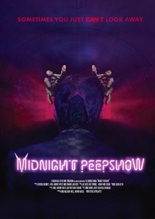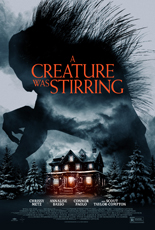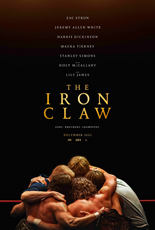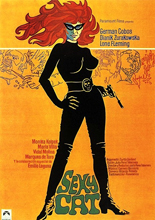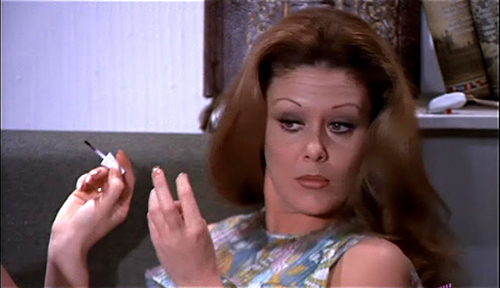

Among the hundreds of horror anthologies I’ve seen, Midnight Peepshow boasts arguably one of the most unique settings for its wraparound: a private booth in a London sex shop. On Valentine’s Day, no less!
That’s where convention attendee Graham (Richard Cotton, The Living and the Dead) drunkenly stumbles into. Each time he inserts cash to make the window go up, the woman on the other side shares her story. It’s no coincidence all three involve Black Rabbit, an Alice’s Adventures in Wonderland-themed site on the dark web where people pay to have their wildest sexual fantasies realized.
From director Airell Anthony Hayles (They’re Outside), the first segment starts the film on a misstep just sketchy enough to give me a Verotika vibe, which no one wants or needs. Here, the miserably married Roisin Brown and David Wayman experience a home invasion that doesn’t unfold as planned.
Now, imagine if Saw’s games were run not by Tobin Bell, but by Gremlins’ Zach Galligan. That’s the case with the next story, courtesy Andy Edwards (Ibiza Undead). Here, a woman (model Miki Davis) wakes up in a makeshift bridal gown and trapped in a dungeon, where three men she’s slept with are tied up and shock-collared. She’s forced to literally play Fuck, Marry, Kill.
Finally, Jake West (Razor Blade Smile) lets Graham witness his own origin story of sorts. As his better, sexier half (a debuting Sarah Diamond) starts liking their intercourse rougher and rowdier, he starts to wonder why … only to learn the hard way (in both meanings, unfortunately).
Merging fear and fornication in the anything-goes style of Showtime’s The Hunger TV series or the Jeff Gelb/Michael Garrett-edited Hot Blood paperbacks, the movie is naughty enough for a nice night of erotic horror. Two outta three make for greater odds than most indie anthologies can muster these days, and that last hour is strong enough to cry out for another go-round. —Rod Lott

